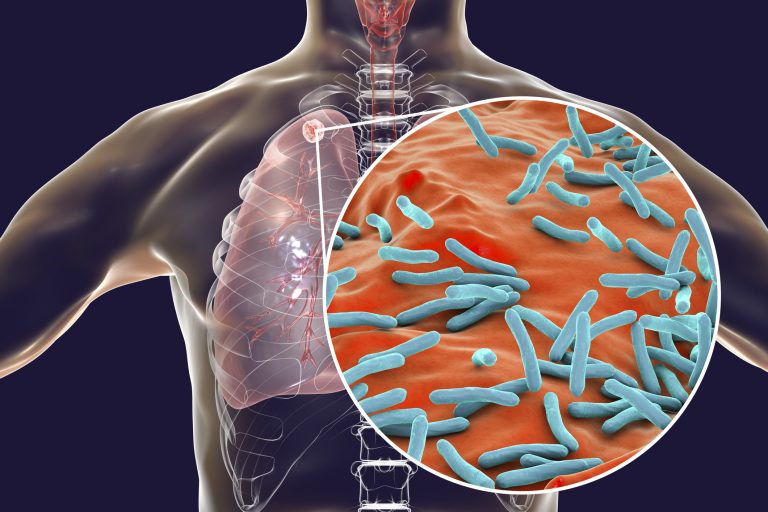
Scientists at University College London (UCL) have found that testing for gene expression biomarkers in blood could predict the onset of active tuberculosis (TB) disease three to six months before symptoms develop. The researchers’ studies indicated that eight different transcript signatures, regulated by interferon signaling, demonstrated equal accuracy for diagnosing incipient tuberculosis. This is the protracted, asymptomatic phase of early disease during which pathology develops. The new findings could ultimately lead to the development of predictive blood tests that help to improve early treatment.
“The emergence of gene expression signature tests, which can aid diagnosis and early treatment, provides real hope for the management of infectious diseases, commented research lead Rishi Gupta, Ph.D., at the UCL Institute for Global Health. “In this study we identify multiple signatures to identify the onset of tuberculosis, which is extremely encouraging, potentially providing multiple targets for early detection.” Gupta and colleagues reported their findings in The Lancet Respiratory Medicine, in a paper titled, “Concise whole blood transcriptional signatures for incipient tuberculosis: a systematic review and patient-level pooled meta-analysis.”
Gene expression signatures are being assessed in a range of diseases to aid diagnosis, prognosis, or prediction of response to treatment, the authors wrote. Some are already used to support the management of cancers, but none have reached the clinic in infectious diseases, such as tuberculosis, which accounts for more deaths—1.6 million in 2017—than any other infectious disease worldwide.
The availability of tests that can determine which individuals will go on to develop active disease could help to ensure that patients get the right treatment, and prevent disease spread. Corresponding author, Mahdad Noursadeghi, Ph.D., at UCL Infection & Immunity, noted, “About one-quarter of the world’s population is thought to have been infected with the bacteria that cause TB. The majority of these individuals remain well and cannot transmit the disease. However, we currently do not know which people are most likely to develop TB disease after being infected. If we can identify these individuals, we can treat their infection more easily and prevent it from spreading to others.”
However, as the authors noted, “The poor predictive value of available diagnostics precludes precise delivery of preventive therapy, thus increasing costs and potential adverse effects, attenuating the effectiveness of prevention programs, and reducing roll-out of preventive treatment in limited-resource settings, where most tuberculosis cases occur.”
For their newly reported study, the researchers initially conducted a systematic review of published gene signatures identified in blood samples from people with TB, compared with healthy individuals.
From this review, 17 candidate gene expression signatures for TB were identified, and tested in more than 1,100 blood samples in published data sets from South Africa, Ethiopia, the Gambia, and the U.K. Blood samples from people who had no TB symptoms at the time they gave blood were analyzed, then the individuals were followed to identify those who developed TB in subsequent months. The authors suggested that to their knowledge, the study represents the largest direct comparison to date of whole blood transcriptional signatures for the diagnosis of incipient tuberculosis.”
Their results indicated that eight of the identified signatures—which ranged from a single BATF2 transcript, to signatures including 25 genes—could predict the diagnosis of TB within three to six months, with accuracy that fell within the range required by WHO. The authors acknowledged that the accuracy of all eight signatures declined as time to disease increased, and none met the minimum WHO target sensitivity and a specificity levels of at least 75% for incipient tuberculosis biomarkers over a two-year period. However, the eight best-performing signatures did meet or approximate the minimum target product profile parameters over a 0–3 month period.
“Our findings establish the gene signatures in blood which show the most promise for identifying people who are at risk of disease,” Noursadeghi added. “Future development of a blood test based on these findings could make an important contribution to efforts to reduce the impact and spread of this deadly infection.”
The authors say their results indicate that to use transcriptional signatures for incipient TB diagnosis may require serial testing every 3–6 months. This would probably not be feasible in areas of high TB transmission, where it may also be challenging to maintain medical records or to ensure that patients return for repeat testing. It is more likely that a 3–6-month screening approach could be used for at-risk populations in higher resource settings, they suggested. “Serial testing among carefully selected target groups might be required for optimal implementation of these biomarkers … In low-transmission, high-resource settings, serial blood transcriptional testing for risk stratification over a defined 1–2-year period might be more achievable, particularly among recent contacts or new entry migrants from high-transmission countries, for whom risk of disease is highest within an initial two-year interval.”
And while the cost of transcriptome biomarker testing would likely “far exceed” the $2 target specified by WHO for a nonsputum triage test for TB disease, the cost of transcriptome testing might come under the $100 WHO target for identifying incipient tuberculosis, when considering the price of interferon gamma release assay testing as a benchmark. “The fact that a number of different signatures show equivalent performance enables greater freedom for commercial development of this approach by overcoming restricted access to specific signatures protected by intellectual property rights and encouraging competition to drive down costs,” the scientists suggested.” Gupta added, “Further development of these tests could help identify people who will benefit most from preventative antibiotic treatment, in order to reduce the occurrence of tuberculosis—a disease which causes the greatest number of deaths worldwide due to any single infection. The availability of multiple signatures will help to broaden access to these tests.”











